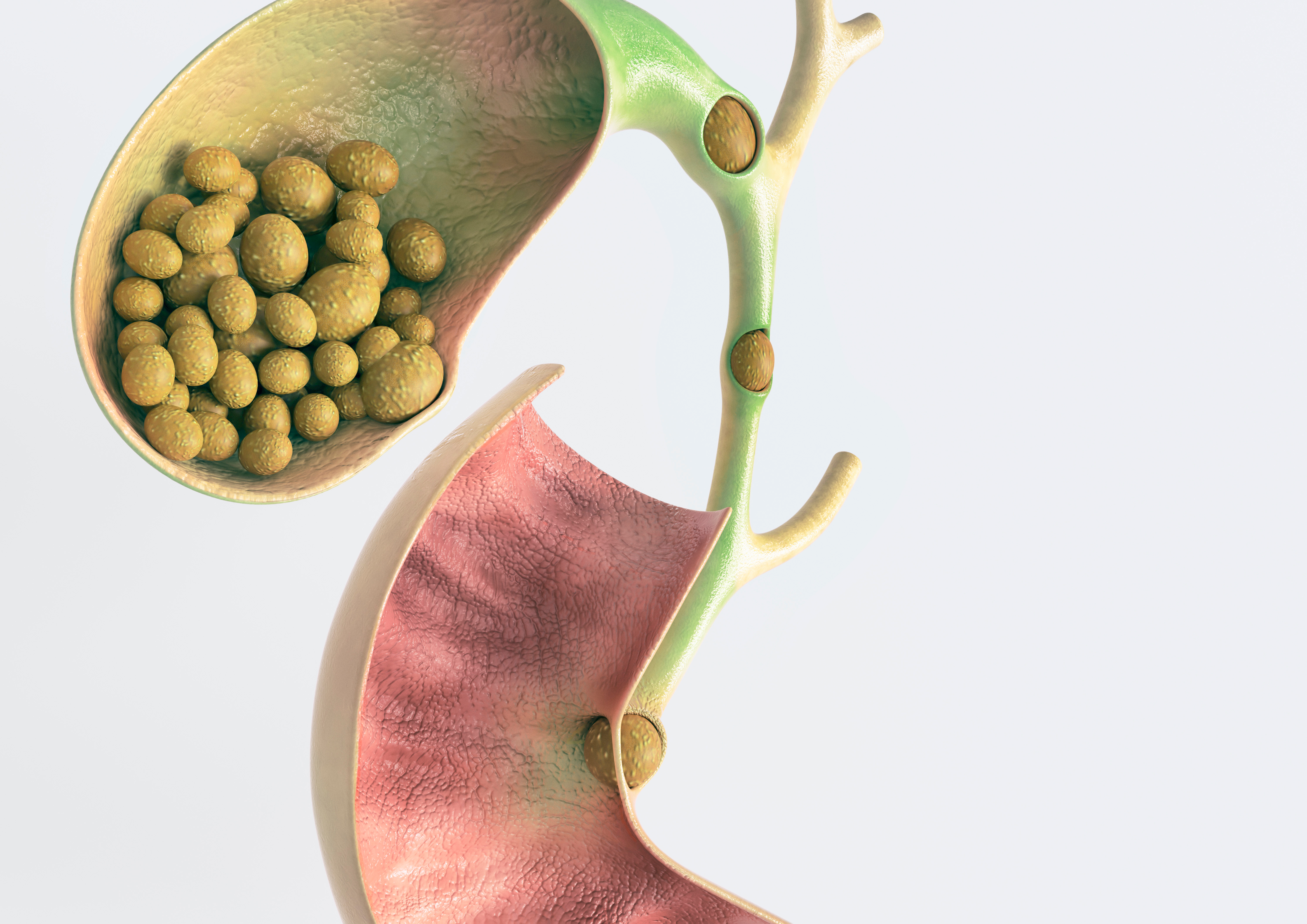Medical Care , Health & Wellness
ERCP: Incisionless Treatment for Bile Duct Stone Removal
The gallbladder and bile ducts

The gallbladder and bile ducts play an integral role in our digestive system — most of which involve helping break down food for easy absorption of nutrients. However, as with all organs, they are prone to developing issues, with the most common being gallstones and bile duct stones.
Bile, which is stored in and released by the gallbladder, functions as an emulsifier, converting fats into fatty acids that can be absorbed by the gut. It also helps with the absorption of nutrients and in carrying waste products from the liver.
As their names suggest, gallstones and bile duct stones are stone-like deposits that form as a result of the bile having too much cholesterol, too much bilirubin, or if the gallbladder doesn’t empty completely or often enough. Some stones may not cause symptoms, but other stones, especially when obstructing the bile duct, may lead to life-threatening conditions.
In this article, Consultant Gastroenterologist and Medical Director of Alpha Digestive and Liver Centre, Dr Benjamin Yip, lets us in on when to visit a doctor and the treatment options available.
Gallstones and bile duct stones
As mentioned earlier, gallstones may not cause any symptoms at all. However, if they move into the other areas, such as the bile duct (bile duct stones) or pancreatic duct, these stones may cause a blockage and put one at risk of severe life-threatening complications such as bile duct inflammation.
Bile duct stones can block the release of bile into the small intestine, and this blockage can lead to inflammation, infection and even fatal damage to the gallbladder, liver, or pancreas.
How do I know if I have bile duct stones?
A bile duct blockage of presents as persistent pain in your upper right abdomen. Other symptoms include:
- Light-coloured stools
- Jaundice (yellowing of the skin or eyes)
- Fever
- Nausea and vomiting
- Dark-coloured urine
However, it is also possible for people with bile duct stones to have no symptoms.
How are bile duct stones diagnosed?
To diagnose bile duct stones, your gastroenterologist will first conduct a physical examination and ask about the symptoms you might have experienced recently.
Next, some common diagnostic tests used to confirm the presence of bile duct stones include:
Imaging Tests
Ultrasounds, computerised tomography (CT) scans, and magnetic resonance imaging (MRI) are all common imaging tests used to diagnose bile duct stones.
Magnetic Resonance Cholangiopancreatography (MRCP)
An MRCP is actually a form of MRI scan that produces detailed images of the liver, gallbladder, bile ducts, pancreas and pancreatic duct.
Endoscopic Ultrasound (EUS)
A EUS is an endoscopic procedure with an ultrasound component that emits high-frequency sound waves to produce detailed images of certain structures of the gastrointestinal tract, such as the bile duct.
How are bile duct stones removed?
Bile duct stones can be removed via surgical intervention or ERCP.
Surgery
Traditionally, an open bile duct exploration was performed. This involves a 15 - 25cm incision in the abdominal cavity to access the bile duct. A drainage procedure can also be carried out to improve the flow of bile and prevent the reformation of stones.
Keyhole Surgery
A laparoscopic bile duct exploration involves the use of a retrieval basket and other instruments with a keyhole incision made to reach the bile duct, under x-ray visualisation. Sometimes, laser ablation can be used. This is suitable for cases with a dilated bile duct.
Endoscopic Retrograde Cholangiopancreatography (ERCP)
ERCP is a complex endoscopic procedure, making it an incisionless alternative for removing bile duct stones. This involves the insertion of an endoscope through the mouth and into the digestive tract. The stones are then removed using baskets or balloons.
- Mechanical lithotripsy — larger bile duct stones are broken up into smaller particles using a wire basket and removed through the endoscope.
- Intraductal electrohydraulic lithotripsy — a tiny probe inserted through the endoscope is used to produce shockwaves that break the bile duct stones into smaller pieces which are removed through the endoscope.
- Intraductal laser lithotripsy — a tiny probe inserted through the endoscope is used to produce laser beams to break up larger bile duct stones into smaller pieces which are then removed through the endoscope.
Under experienced hands, it is a low-risk procedure.
Is any preparation needed before an ERCP?
- You will be asked to fast for 6-8 hours before the ERCP
- Changes to your medication may be recommended by your doctor
Summary
Bile duct stones are painful and can be potentially dangerous. Thankfully, it is treatable with a variety of surgical and minimally invasive options. Hopefully, this article has helped you make a more informed decision about your choice of treatment for bile duct stones. Early treatment is crucial. If you suffer from any of these symptoms, please consult your gastroenterologist for a proper diagnosis and a treatment plan that best suits you.
About Dr Benjamin Yip
Dr Benjamin Yip is an experienced Consultant Gastroenterologist and the Medical Director of Alpha Digestive & Liver Centre.
Dr Benjamin Yip sees patients with General Medical as well as Gastroenterology/Hepatology problems. His main interest and joy lies in endoscopy. He regularly performs general endoscopies such as gastroscopy and colonoscopy (both diagnostic and therapeutic). However, his expertise lies in Advanced Endoscopy, where he performs complex endoscopic procedures including ERCP, EUS, single balloon enteroscopy, SpyglassTM cholangioscopy and enteral dilation/stenting.
Prior to his private practice, Dr Yip served in the public sector for almost two decades. He was appointed Consultant at Khoo Teck Puat Hospital (KTPH) as well as Ng Teng Fong General Hospital (NTFGH). He is currently still a Visiting Consultant at NTFGH.
Doctors

Related Articles
Health & Wellness
How to Deal with Obesity & Diabetes?
The prevalence of obesity in the world have continued to increase significantly. It is estimated by WHO that 39% of adults aged 18 years and over were overweight in 2016, and 13% were obese.
Read moreMedical Care
Blood delivery drone due to become world’s fastest
New-generation drones slash delivery time of life-saving blood products and medicines in hard-to-reach areas in Rwanda
Read moreMedical Care
Better use your nose
In the long term, mouth breathing might lead to several complications
Read moreLatest Articles
Medical Care
Clinical Exercise Physiologist (CEP): The Emerging of Exercise is Medicine
How Exercising can be a Medicine
Read moreMedical Care
Reversing type 2 Diabetes: Embracing Hope and Determination
Experience the remarkable journey of Ash and his grandfather Atok as they conquer type 2 diabetes through unconventional methods, showcasing the power of love and determination over adversity.
Read moreMedical Care
Bladder Cancer: What You Need to Know
Empower yourself with our comprehensive guide to bladder cancer. Explore symptoms, diagnosis, treatments, and supportive resources to safeguard your health.
Read more